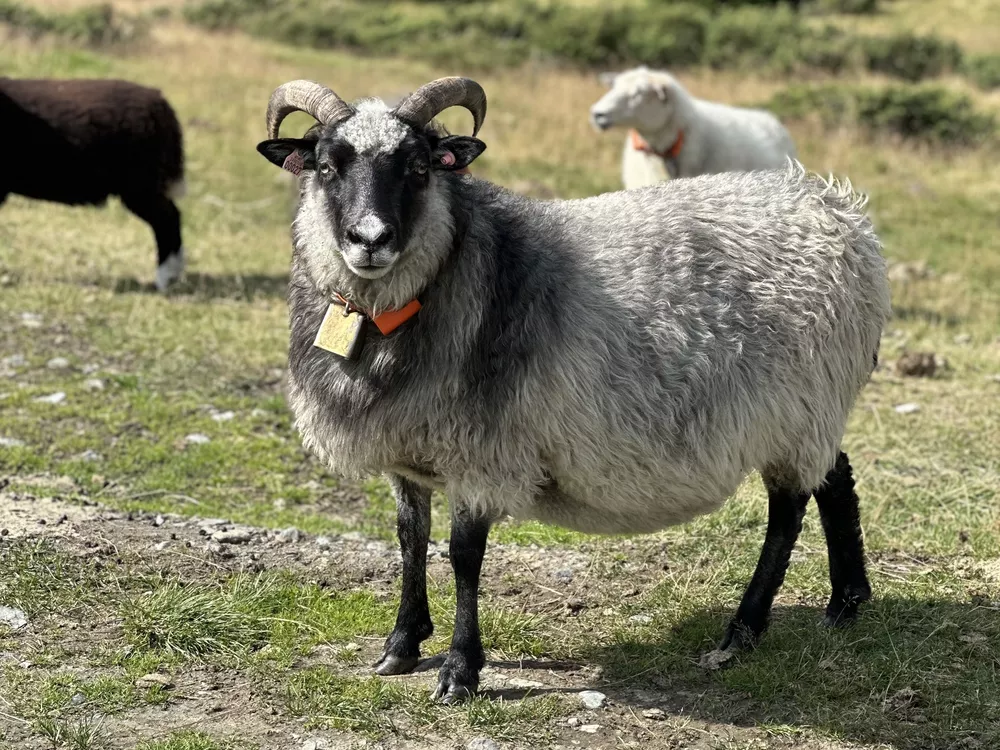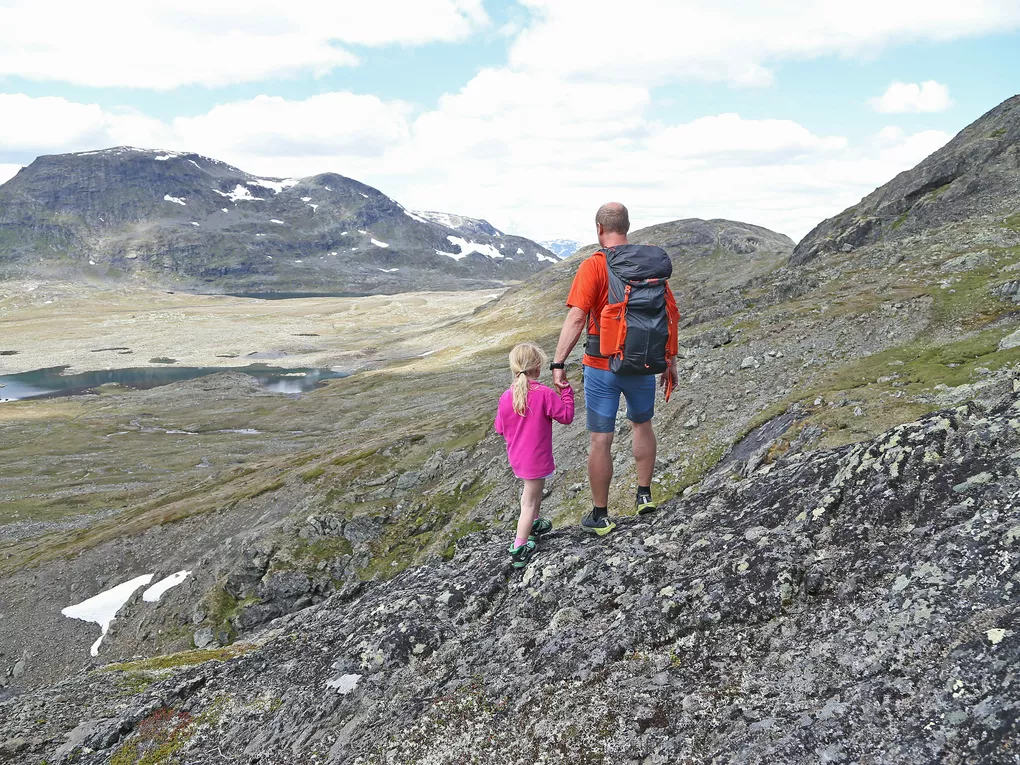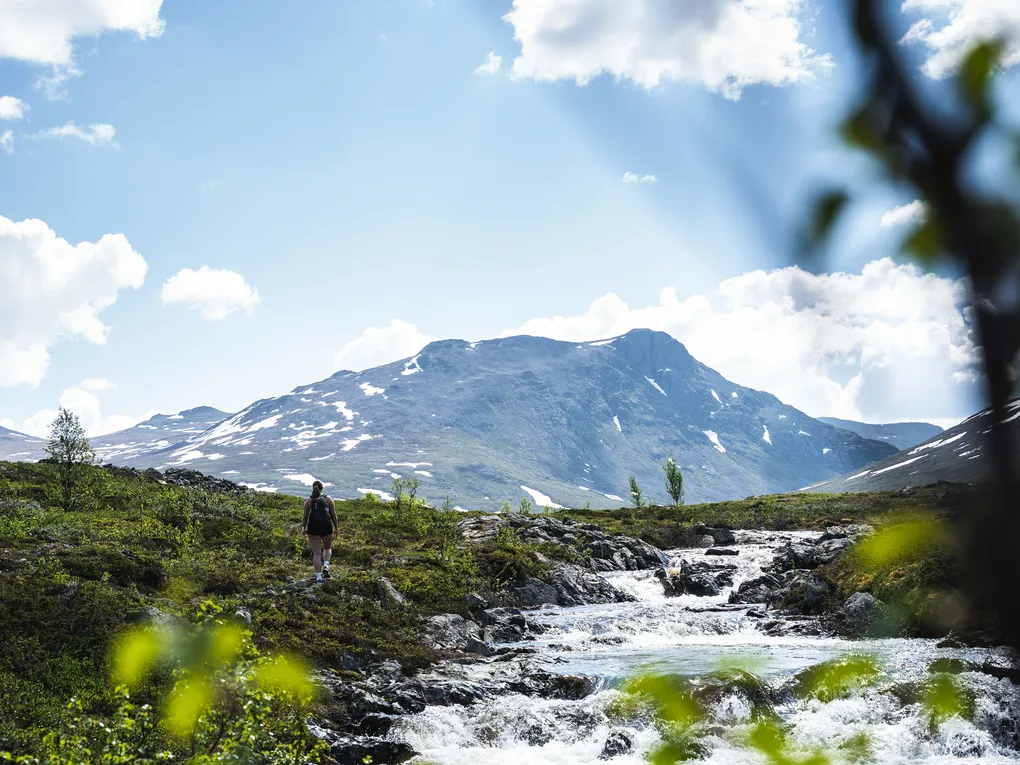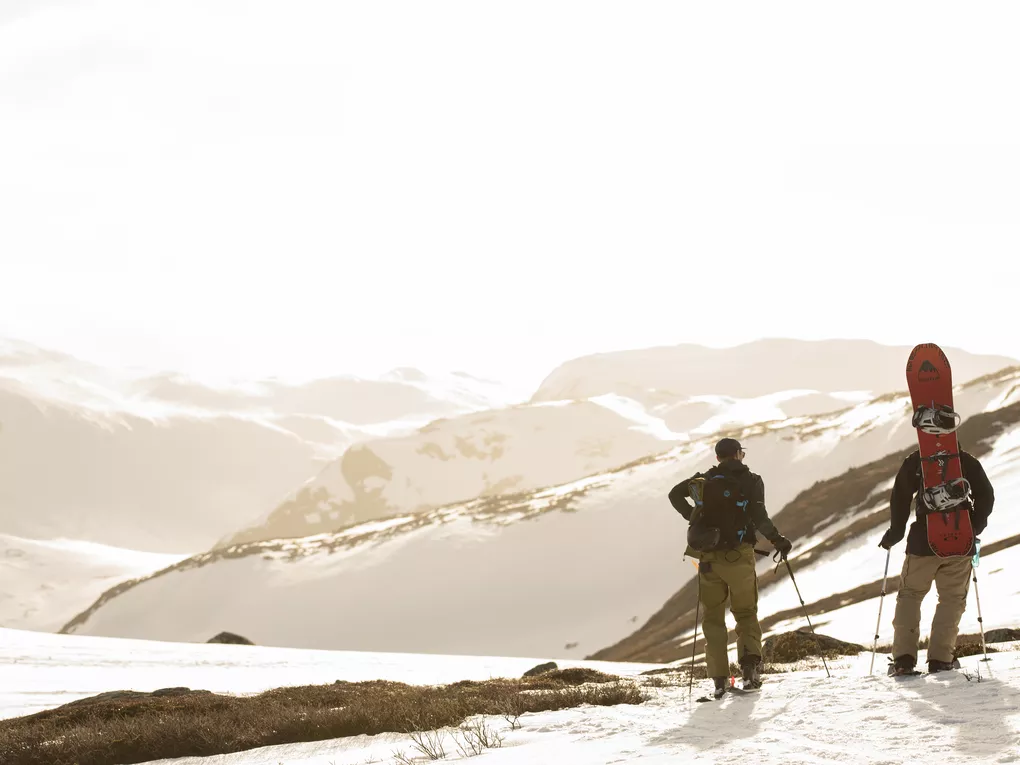Mountain ethics
& dog leash rules


The Norwegian mountain code
Mountain ethics and mountain code is about the individual having the knowledge to take responsibility for themselves on a tour. It is also about having the surplus to help others who's in need.
Plan your trip and inform others about the route you have selected.
Adapt the planned routes according to ability and conditions.
Pay attention to the weather and the avalanche warnings.
Be prepared for bad weather and frost, even on short trips.
Bring the necessary equipment so you can help yourself and others.
Choose safe routes. Recognize avalanche terrain and unsafe ice.
Use a map and a compass. Always know where you are.
Don’t be ashamed to turn around.
Conserve your energy and seek shelter if necessary.
Read more about the Norwegian mountain code and what the points mean on dnt.no
We are fortunate in Hemsedal during the summer to have grazing animals in the mountains.
In Hemsedal, we have a leash requirement during the summer from April 1st to October 31st, to protect grazing livestock. This requirement applies throughout the municipality, even at altitudes over 1000 meters above sea level. This is a statutory rule that must be followed! It applies to all types of dogs, and claiming that your dog doesn't chase grazing animals doesn't exempt you. Leash requirements are in effect year-round in urban areas, areas with houses, areas designated for public purposes, cemeteries, and designated recreational areas.
Another essential consideration when you are in the mountains is to remember to close all gates (even if they are difficult to close) that you pass through. This is to ensure that no grazing animals escape from the area where they are grazing.
Mountain manners – the Hemsedal way
We love the mountains here in Hemsedal – and we want everyone to enjoy them with both freedom and respect. That’s why we’ve made a series of short and fun videos to show how to be a good guest in nature.Here are eight easy tips to make your mountain adventure better – for you, for the animals, and for everyone coming after you. Watch the films.
1. Gate open? Leave it open. Gate closed? Close it behind you.
2.Freedom in the mountains this summer also means responsibility – for you and your dog. Always keep your dog on a leash and under control.
3.Whatever you brought with you, take it back home. Nature shouldn't know you were there. Simple as that.
4. Some trails are actually fields. And that grass is meant to be winter feed for animals. So don’t make new shortcuts through the farmer’s food, OK?
5. Is it wet? Let the trail rest. Wet tracks last long and damage the path. Look down before you step!
6. When nature calls, answer with style. Dig a hole, be discreet, and take your paper with you.
7. Cairns show the way – and have done so for hundreds of years. New ones can mislead and damage cultural heritage. Leave the stones where they are!
8.Park in designated areas. Don’t block snowplows, farm work or emergency access. And yes, paying for parking helps keep the mountains accessible.
If you encounter cows on your hike, remember the cow etiquette rules:
Keep your distance from the animals and walk around the herd.
Don’t walk between the animals. Cows can become pushy and cause unwanted situations.
Don’t approach a calf. The mother cow may attack to protect it.
Dogs should not be taken near grazing animals. Remember, dogs must be kept on a lead from 1 April to 31 October.
Cows are curious. If the herd becomes too interested in you, put down anything you’re holding and calmly move away. You can collect your gear once the cows have left.
If you open a gate, close it behind you! An open gate can let animals into areas they shouldn’t be in, which can be dangerous for both them and others.

Safety when ski touring/ back country skiing
Where to park your car when ski touring or other mountain activities
We encourage all our guests and residents to explore the mountains in Hemsedal, and we see that more and more people are heading out on excursions. This can create some challenges, especially concerning parking in the most "popular" areas.
Therefore, we kindly ask you to consider the following:
1. Park in designated areas in a way that maximizes the available space.
2. Avoid parking along roads or in places that obstruct snowplowing, utility vehicles, or emergency vehicles.
3. Parking is usually subject to fees, either through toll booths, payment boxes, or electronic payment solutions like Vipps. The fees cover snow removal and facilities, which benefit skiers and snow enthusiasts.
4. Standard etiquette applies. Many of the excursions pass by farms, mountain cabins with enclosed fields, fences, and gates.
- Please leave tracks at a reasonable distance from houses and other buildings.
- Close gates securely.
- Avoid stepping on fences.
Untouched snow is a precious resource! Whether going uphill or downhill, make your tracks with the thought that others want to enjoy the same experience as you.
Remember to check the weather forecast and avalanche risk. Choose your activities according to your abilities, and make conscious choices to ensure that you can enjoy the outdoors today as well as tomorrow. In case of accidents, your group should be prepared with proper skills and equipment. For more information, read our article on "Safety first."

What to do when you need to go to the toilet while hiking? Here are some tips:
- Go a significant distance away from the trail or road and find a secluded spot.
- Dig a hole that is deep enough, at least 15 cm (6 inches). Cover the hole when you're finished. Remember animals really like finding your shit.. and that's not nice.
- No one wants to see scattered toilet paper, so bring matches and burn the paper after you're done. Leave the ash on top of your waste; it aids in decomposition. Remember to cover it up.
- If you prefer not to burn the toilet paper, it's recommended to bring a dog waste bag in which you can place toilet paper, wet wipes, and any waste.
- Remember to bring toilet paper and wet wipes back with you; use a dog waste bag for this purpose.
- Hygiene is essential when you're on a hike. After using the bathroom, it's a good idea to have hand soap or hand sanitizer readily available.
- Also, remember to clean up after your dog while you're on a hike and dispose of the waste in the nearest trash bin.

Weather Interpretation in Hemsedal and Norway
In Hemsedal, the weather provides us with crucial signals about what may happen in the coming hours and days. Understanding natural weather signs can be a valuable skill when you're out in the mountains. Here are some local weather signs to be aware of:
- Light Conditions: Changes in light conditions, such as sudden increased snowdrifts on mountain peaks or dark clouds approaching rapidly, can indicate impending weather changes.
- "When fog settles in the valley, it's going to be a good day": Fog can form in the valleys, especially in the fall. This fog occurs when cold air from the mountains descends into the valley and meets moisture from rivers. The fog usually dissipates when the sun starts warming up in the morning, but in autumn and winter, it can persist all day if it doesn't get warm enough.
- Halo Around the Sun: A halo around the sun or other optical phenomena like sun dogs and weather halos can indicate an approaching precipitation area. This can mean rain or snow, depending on the season.
- Cloud Development: "When the sun shines on western clouds, there'll be rain before evening." If, at sunrise, you observe the sun shining on clouds in the west, this can be a visible sign that a large cloud area is located below the horizon and is moving eastward. Over the course of a few hours, the clouds will cover the entire sky, the sun disappears, and precipitation arrives before evening. "Clouds in the sky on a sultry summer day bring a shower before evening." During the summer, clouds can often form and develop into rain clouds as the evening approaches. An unstable atmosphere can lead to rain showers, while atmospheric stabilization can result in dry weather.
- "When the Ox puts on its hat, it will snow all night": If a "hat" forms over a mountain peak, it's a sign that there is moist air in higher atmospheric layers. If cloud cover increases so that the "hat" grows and perhaps becomes a continuous layer of clouds, this may indicate an approaching precipitation area.
- In winter, it's often said in Hemsedal that we want precipitation from the east because it means a lot of snow, while precipitation from the west tends to be wetter and doesn't bring as much snow.
- Swallow Behavior: Swallows fly low when bad weather is approaching because they are hunting insects sensitive to moisture. Therefore, you may see swallows flying lower before precipitation sets in.
To experience Hemsedal at its best, it's wise to pay attention to local weather signs and use this knowledge to your advantage when planning outdoor activities. Weather can change rapidly in the mountains, so be prepared and enjoy the beautiful nature safely.
You can track global wind systems on the Windy.com weather service.

Hemsedal - The Scandinavian Alps
In Hemsedal, we have everything from high mountains to deep valleys, as well as many lakes and rivers. One challenge related to mountain safety is that we have a variety of terrains, including avalanche-prone areas, frozen lakes, and waterfalls that require careful consideration before embarking on hikes or climbs.
Snow usually starts to fall in early October, and the trail you walked on in the summer can now be slippery, posing a risk of slipping and falling. Ice typically forms on lakes in November, and throughout the winter, you must keep an eye on lakes with regulated water levels, as changing water levels can make the ice less safe to walk/ski on.
Another crucial thing to remember is that the weather can change rapidly in the mountains. There can be a significant difference in weather conditions between the valley and the mountains. Learn more about weather signs and how to interpret them below.
We've made life a bit easier for mountain enthusiasts like you with several articles that can help you have a fantastic day in Hemsedal. We have articles on Safer Ski Touring, Ski Touring in Hemsedal, Avalanche Courses and who offers them, and a short article about taking your dog on a hike.
Leash Requirement - see more about the regulation further down in the article. Remember to read about "the right to roam" and what you can and can't do in Norway.



